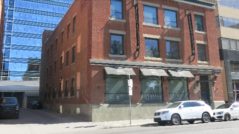The main difference between recourse and non-recourse loans is the assets which the lender can repossess in the case of default. In both types of mortgages, failure to keep up with repayments allows the lender to seize assets.
In this article, you will find out more about the types of assets and can and cannot be seized with secured loans.
Recourse vs. non-recourse loans
A non-recourse loan uses the property that was purchased as collateral for the loan. In the event that a borrower fails to make mortgage payments, the lender can lawfully seize the property and sell it to cover the outstanding balance of the loan.
With non-recourse loans, the borrower isn’t personally responsible for the debt. Therefore, the lender can’t pursue the borrowers to regain any additional debt that wasn’t covered.
With recourse loans, the borrower is liable to cover any deficiency balance if they default on loan repayments and their property is repossessed. This means that the lender can file a lawsuit against the borrower to obtain the deficiency balance.
In many cases, non-resource loans are used for long-term loans like mortgages, however, they usually have higher interest rates than recourse loans.
How to minimize recourse debt
Because recourse loans offer less risk to the lender, they are often preferred by lenders. For borrowers, taking out recourse loans benefits them because they can pay less interest and save money.
How is it possible to lower your recourse debt to avoid greater financial troubles in the future if you can’t make repayments?
- Provide extra collateral which can reduce the lender risk
- Make a higher down payment to take advantage of better loan terms
- Agree to shorter loan terms
Most businesses try to avoid recourse loans to finance real estate deals and investments. However, sometimes it is the only option. Therefore, it’s important to know the difference between recourse loans and non-recourse loans to protect your assets.












